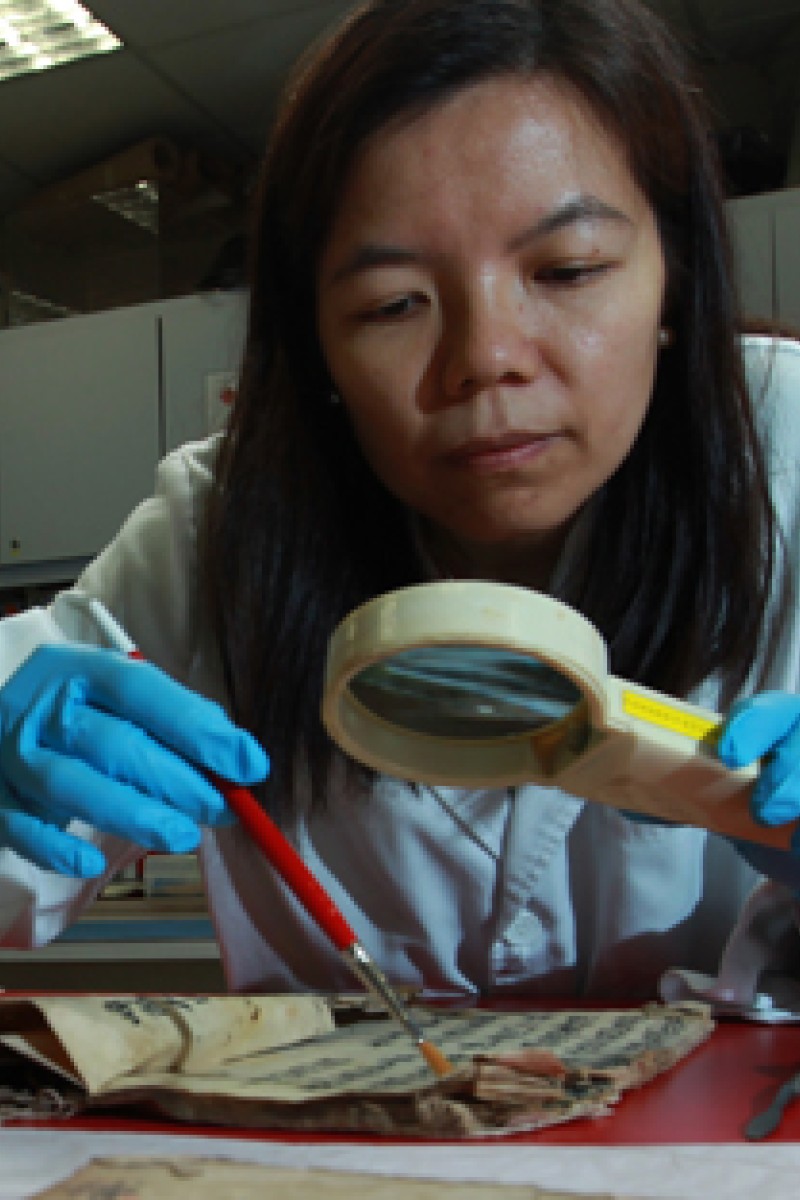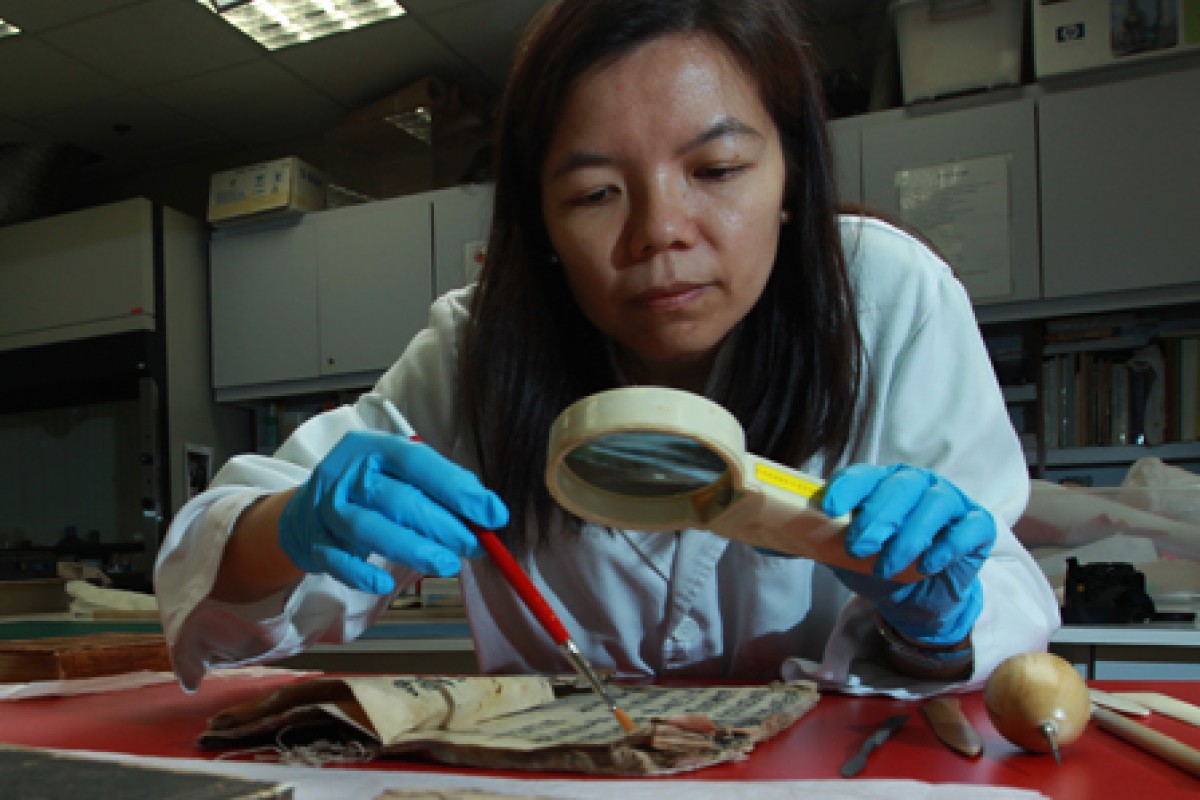
The job of a paper conservator calls for a delicate touch, loads of patience and the guts to stomach grime, mould and maybe even a colony of termites
 Alice Tsang, paper conservator at the government's Central Conservation Section, finds it exciting to 'treat' a newly arrived book and to uncover the mysteries hidden between the pages.
Alice Tsang, paper conservator at the government's Central Conservation Section, finds it exciting to 'treat' a newly arrived book and to uncover the mysteries hidden between the pages.Young Post talks to Alice Tsang Chee-ho, a paper conservator at the Central Conservation Section under the Leisure and Cultural Services Department.
Requirements
Conservators should have an eye for detail and a delicate touch. They deal with tiny holes, creases and mould on old manuscripts and photographs while having to protect the fragile paper.
The work calls for a great deal of patience because some procedures are tedious, repetitive and time-consuming. For example, it takes three or four people a week to separate pages from a 100-page book that are stuck together like a block.
Sometimes the work gets unpleasant. Tsang once went to a village house to collect a pile of valuable manuscripts infested with worms and termites.
Qualifications
Universities in Britain offer undergraduate programmes in conservation science, while in America, there are courses only at the postgraduate level - many start off with history or fine arts. Hong Kong has no such specialised studies, but Tsang and many of her teammates hold a degree in chemistry or applied chemistry.
The section sends chemistry graduates overseas to take a one-year course on basic conservation. Tsang studied for a master's degree in archaeological science at the University of London and spent three months working in the British Museum as an intern.
Work prospects
The section mainly serves the Museum of History and Museum of Art in Tsim Sha Tsui and the Heritage Museum in Sha Tin. It has eight specialties: paintings; photos and prints; historical documents and manuscripts; textiles and natural history specimens; metals; organic materials; ceramics and inorganic materials; and archaeological finds.
Tsang examines the condition of each newly arrived item, then takes steps to protect it.
She also tries to keep the exhibits in the best possible condition. She inspects the displays regularly to monitor their condition. Every year her team takes everything out of the storeroom for thorough check-ups and repairs.
Tsang also researches the exhibits' origins and what they are made of, and tests conservation methods. Her team's findings are published in journals and presented at conferences.
The excitement of protecting a newly arrived book and enhancing her knowledge keeps her going. "It's like solving a puzzle ... I still remember how thrilled I felt to brush off a thick coat of mould to find someone's signature," Tsang says.
Long-term prospects
An assistant curator II pairs up with an assistant curator I for a year. An assistant curator I supervises a team and oversees a project devising conservation strategies. When you have gained enough experience dealing with an extensive range of objects, you may take up a managerial role as curator and then chief curator.
Average pay
An assistant curator II can expect to get HK$22,005 to HK$35,290. An assistant curator I's pay ranges from HK$36,945 to HK$49,480.